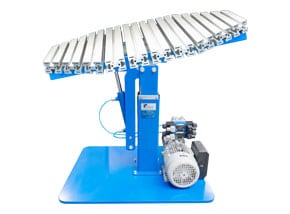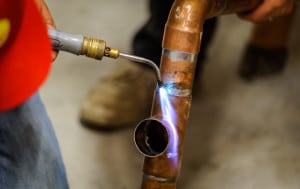Bad posture impacts on our bodies and causes all kinds of problems, from muscular and back pain to fatigue. When it is constant, bad posture can cause chronic health problems because it impacts on the spine and can constrict nerves and blood vessels.
Good posture enables us to sit, lie, stand, and walk in positions that don’t strain supporting muscles or ligaments, particularly during activities that involve movement. This is largely because good posture reduces stress on the spinal column and allows our muscles to work efficiently. This, in turn, prevents muscle strain and helps to keep our joints properly aligned.
While welders are not the only people who are prone to bad posture, the fact that they typically bend forward over their work for prolonged periods of time makes them more likely to suffer back pain and injury to postural muscles. Those who are obese are even more at risk.
While there are proven ways to sit and stand properly to help maintain correct posture, people who have to lean over their work risk bending the spinal column. If you sit at a desk you can control your sitting position. When you stand and walk, you can do the same. But moving and bending in an unnatural fashion really can be damaging.
In some industries, particularly those that employ people who sit at desks all day, ergonomic chairs can be part of the solution. For welders, a height-adjustable welding table that can be rotated and tilted is the best solution for maintaining an ergonomic posture while working.
Ergofix – An Ergonomic Solution for Welding
 Forster America has a height-adjustable welding table solution for bad posture in the welding environment. Recognizing that good posture is virtually impossible with regular non-adjustable welding tables, the company now manufactures Ergofix, a state-of-the-art welding “manipulator” that is infinitely adjustable in height. Better still, it can be rotated a full 360 degrees and tilted up to 45 degrees.
Forster America has a height-adjustable welding table solution for bad posture in the welding environment. Recognizing that good posture is virtually impossible with regular non-adjustable welding tables, the company now manufactures Ergofix, a state-of-the-art welding “manipulator” that is infinitely adjustable in height. Better still, it can be rotated a full 360 degrees and tilted up to 45 degrees.
Ultimately, the Ergofix welding manipulator enables welders to maintain good posture while they work. This is not only the best solution for good health, but it also produces the best welding results because workers don’t get tired and sore.
The concept is brilliant, yet so simple, utilizing hydraulics to adjust the height of the tabletop from 27.2 inches to 39 inches. The rotation facility has continuous locking for ease of operation and accuracy.
Forster America currently offers three models with different dimensions:
- Ergofix 800 – 31.5 x 31.5 inches
- Ergofix 1000 – 39.4 x 39.4 inches
- Ergofix 1200 – 39.4 x 47.2 inches
Like all Forster America welding tables, the Ergofix incorporates neatly spaced rails that can be adjusted for jigs and clamps, including the unique Vacufix clamping system. This enables welders to fix sheet metal parts securely to the table and work piece using a vacuum plate that has a very small vacuum surface. Welding seams aren’t covered by clamping arms, making welding much easier than it would otherwise be. Also, the Vacufix clamping system is ideal for both manual and robotic welding, which increases the versatility of the Ergofix unit. Contact Forster America today for a quote!

 Copper and most copper alloys can be successfully joined using welding, brazing or soldering processes. The exact process chosen depends largely on whether you are welding pure copper or an alloy. If you are welding an alloy, the alloy elements will determine which process is used, as well as all the other factors one takes into account when welding, including filler material used.
Copper and most copper alloys can be successfully joined using welding, brazing or soldering processes. The exact process chosen depends largely on whether you are welding pure copper or an alloy. If you are welding an alloy, the alloy elements will determine which process is used, as well as all the other factors one takes into account when welding, including filler material used.